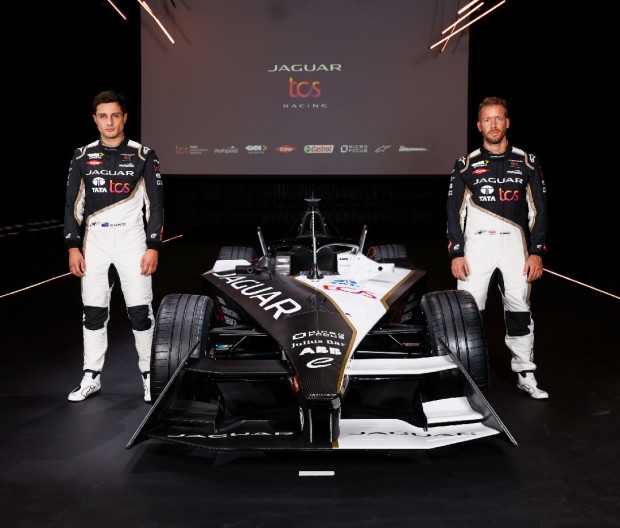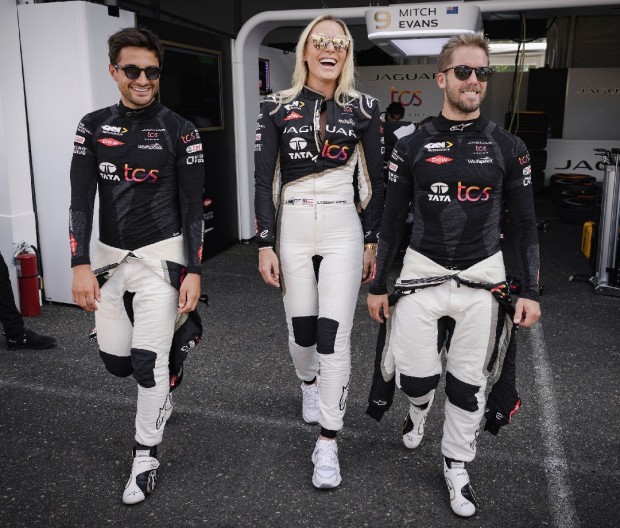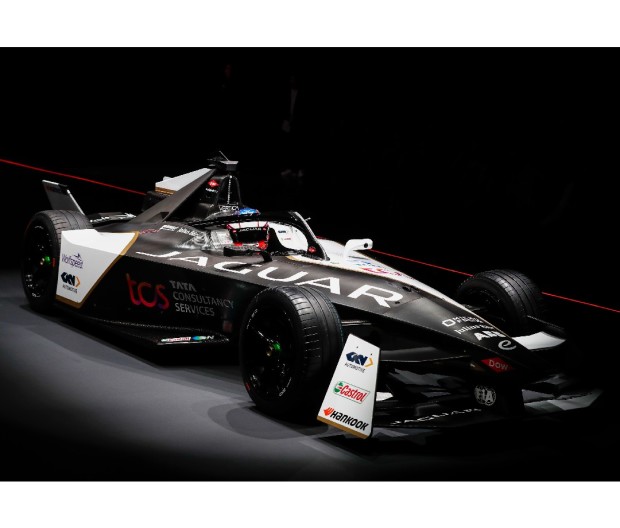No products in the cart.
Fitness Tips
Why Formula E Is the Fastest Growing Motorsports Series
Many would argue that Formula E is the future of racing. It has the excitement of fast cars, celeb sightings (e.g. super-athlete and Jaguar ambassador Lindsey Vonn), exclusive VIP experiences, and loads of race-day excitement. Races are characterized by the distinct “hum” of electric cars rather than the traditional ear-splitting growl and exhaust that accompany races with combustible engines.
In a nutshell, Formula E aspires to accelerate the new electric era, one race and one city at a time. With its Season 9 finale having just wrapped on July 30 in London, the elite racing series continues to make a convincing case that it’s the next planet-friendlier Formula 1—speeding straight into the spotlight.
Related: You Can Thank Electric Cars for Killing Horsepower
Everywhere from Berlin; Jakarta; London; Rome; Diriyah, Saudi Arabia; Mexico City; Monaco; to Portland, OR (Formula E’s only U.S. stop), the race series sends a powerful message about sustainability and the viability of electric cars. Most of the events follow a street race format with all of its overtakes, slipstreams, drifting, jostling for position, and dramatic miscalculations that result in hitting walls or skidding off-track.

Courtesy image
What Is Formula E?
Formula E is an all-electric alternative to the widely popular Formula 1 juggernaut. It was the brainchild of French motor sports powerhouse, Jean Todt, and Spanish politician/businessman, Alejandro Agag. In 2011, in a Paris café, they jotted down notes about a potential all-electric race, single seat car Formula series on the back of a napkin.
The series debuted in 2014 in Beijing’s Olympic Park. With its ninth season in the rear view, Formula E is now being billed as the fastest growing motorsports series worldwide, with 12 teams and 24 of the world’s most decorated drivers. Drivers are paid a salary and bring no sponsorship dollars to the teams, unlike Formula 1 and NASCAR, which helps to bring in the best drivers, rather than the “pay-to-play” structure of many racing formats.
Related: The Best E-Bikes of 2023
Improved Technology and More Staying Power
Teams spare little expense with not only cars but the development of technology. In the early seasons, weak batteries necessitated that drivers swap out entire cars mid-race. But as the circuit matured, so did the tech. The new Gen3 cars are advertised as the “lightest, fastest, most powerful and efficient electric race cars in the world.”
These next-gen cars reach speeds of 200-plus miles per hour—in electric motor talk that’s about 350kW—with batteries that not only last for an entire hour-long race, but recharge about 30 percent of their power via regenerative braking.
The carbon-fiber chassis and batteries are the same for all 12 teams. What differs are the custom, lightweight, and super-efficient electric power trains designed to improve not only speed but range of the electric vehicles. That translates to the development of the motor, transmission, inverter, and rear suspension.

Courtesy image
Jaguar TCS Racing: Race-to-Road Innovation
I had the good luck to attend the ABB FIA Formula E race in Portland with the Jaguar TCS racing team, led by drivers Mitch Evans and Sam Bird in the brand’s first Gen3 race cars. In addition to getting some up close and personal time with the drool-worthy cars, I discovered that Formula E is a real-world testing ground for Jaguar as part of its commitment to becoming an all-electric luxury brand by 2025.
Jaguar TCS Racing’s goal is to reimagine car racing, but its Formula E team is also the key to developing and testing technology shared with the broader JLR (Jaguar Land Rover) consumer car development. Just like mountaineering brands depend upon elite athletes to test top-of-the-pyramid climbing equipment before offering it to the public, Jaguar utilizes its Formula E learnings for trickle-down, race-to-road innovation in consumer cars like the muscular, high-performance Jaguar I-PACE—an all-electric SUV that’s benefitted from the brand’s Formula E research and development. While the decked-out interior for the 2024 model is full of luxuries like a heated steering wheel and a big, user-friendly console screen, it’s super-fun to drive, offering superb acceleration, power, and all-wheel drive performance along with crisp cornering and remarkable regenerative breaking—like Jaguar’s Formula E cars.

Courtesy image
“I love that Formula E serves as a testing platform for the development of technology that eventually finds its way into the electric cars we buy,” says Jaguar ambassador and famed ski racer Lindsey Vonn. “With the advancements that have trickled down from Formula E, we now have the possibility of owning an electric car that is not only environmentally friendly but also incredibly fast—and for me, going fast is a necessity. Formula E is the future.”
Related: You’ll Never Guess How Formula E Drivers Train
Formula E Schedule: Where and How to Watch
This year’s ninth season of Formula E wrapped up in July in Rome and London. As of January 2024, 11 races in the ABB FIA Formula E World Championship will be available for viewing on The Roku Channel. Season 10 of the Formula E championship will include 17 races in 13 cities, starting in Mexico City on January 13, 2024, and ending in London with a doubleheader on July 20 and 21.

Courtesy image
7 Ways Formula E Leads the Way for Sustainable Racing
1. Net Zero Aspirations
The plan is to ensure that Formula E races are completely net zero in their carbon footprint by 2030—and it’s not greenwashing. The entire Formula E series, from its Gen3 cars to its paddock and concerts, are powered using HVO generators—a renewable energy source that relies on hydrotreated vegetable oil, reducing carbon emissions by 90 percent. Also, everything from name tags to water cups are sustainably sourced, recyclable, or biodegradable.
2. Arrival of Gen3
Debuting this past season, Gen3 is the world’s first race car specifically designed and optimized for street racing. It’s heralded as the pinnacle of high performance, efficiency, and sustainability.
3. Sustainable Batteries and Regenerative Braking
Gen3 batteries are among the most advanced, sustainable batteries ever made, consisting of sustainably sourced minerals and battery cells that can be reused and recycled at end of life. Formula E cars (and e-vehicles in general) rely on regenerative braking to capture the car’s kinetic energy and help recharge the battery. In the case of Formula E, car batteries receive about 30 percent power charge return from braking.
Related: Coolest Cars, Bikes, and Auto Tech Revealed at 2023 CES
4. Recycled Carbon
Linen and recycled carbon fiber (from retired Gen2 cars) have been used in Gen3 bodywork construction for the first time, reducing the carbon footprint in the production of the Gen3 bodywork by more than 10 percent. All wasted carbon fiber is reused for new applications through adoption of processes borrowed from the aviation industry.
5. New Sustainable Standards for Tire Rubber
Natural rubber and recycled fibers make up nearly 30 percent of new Gen3 tires—and all tires are fully recycled after racing. Racers are limited to two sets of tires per race, a fraction of what Formula 1 drivers are allocated.
6. Sustainable Fluids
This year, Jaguar TCS Racing worked with Castrol to become the first team in Formula E history to use a more circular transmission fluid in its race car, while demonstrating that it can perform in parity to virgin base oil. The learnings are now being used to help develop increasingly sustainable fluids for future EV road cars without compromise on performance and efficiency.
7. Planet-Friendlier, PVC-Free Livery
This season, Jaguar TCS Racing adopted AERO’s advanced urethane film technology on the black, white, and gold livery of the Jaguar I-TYPE 6 race car. Working as an alternative to traditional wrap, AERO’s technology has a streamlined and sustainable manufacturing and application process, creating minimal impact on the environment with no polyvinyl chloride (PVC) compounds, no volatile organic compounds (VOCs), and zero carbon dioxide (CO2). Plus, the materials cannot particulate and flow into rivers, oceans, and groundwater.
Source link

